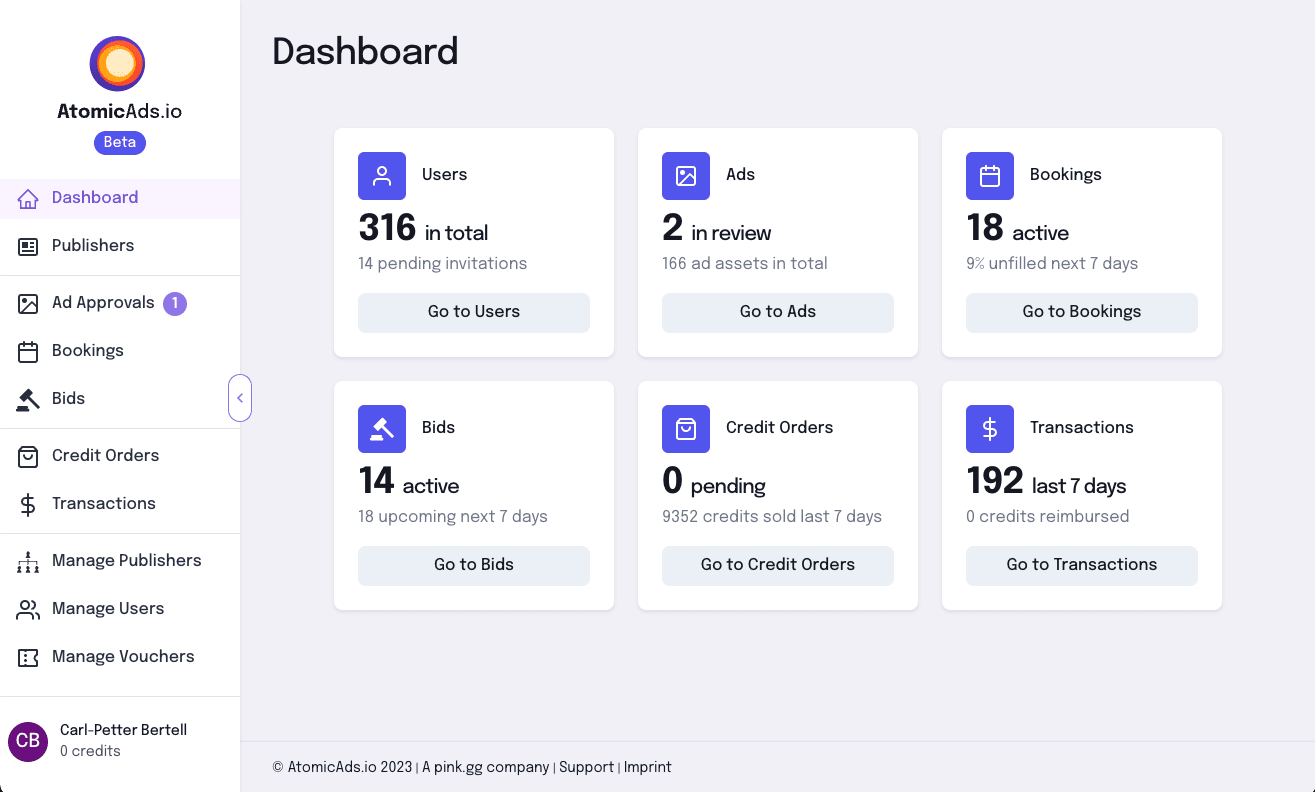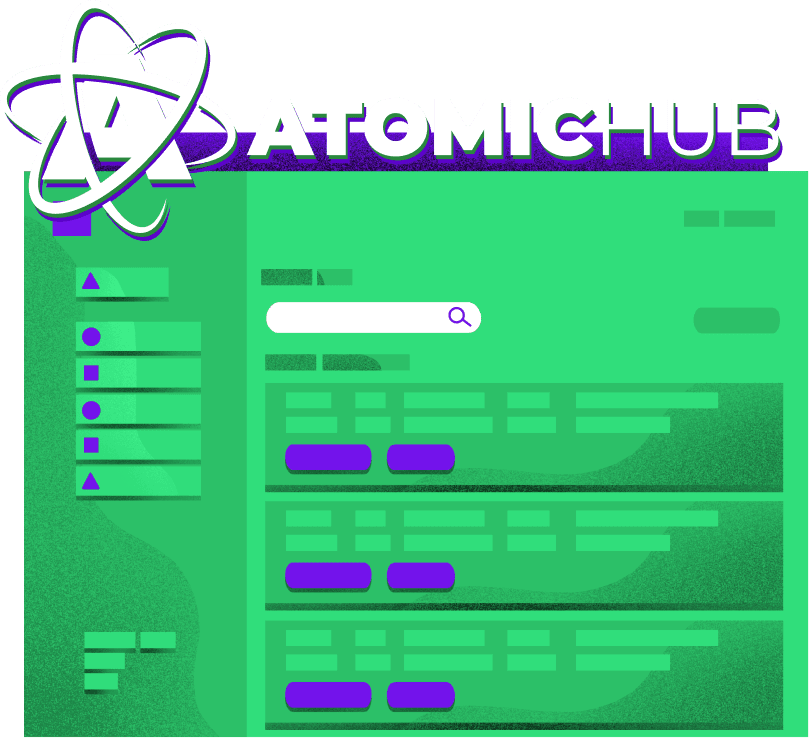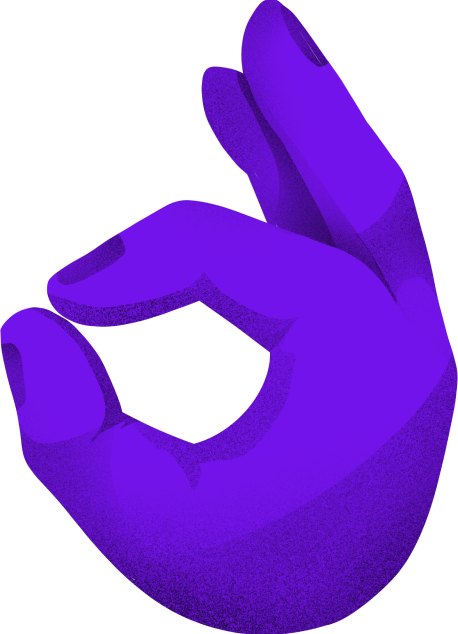Background
Our client, AtomicHub is a significant player in NFT marketplaces. They own properties like atomichub.io, which offers NFT marketplaces on the WAX and EOS blockchain ecosystems, and nftinsider.io, a media outlet for all things NFT.
They identified a significant market opportunity as inquiries about advertising on their website(s) weren’t uncommon, but creating your own homegrown ads platform is no small undertaking.

Martin Harder
BizDev at AtomicHub

“Makers’ Den helped us co-create and iterate our ads platform. They’ve proven to be stellar product-oriented developers, taking ideas one day and making them reality the next.”
How we started off
Internally AtomicHub decided to pursue this opportunity, but with their internal resources already stretched to the limit, they opted to find a technical partner to help realize their vision.
Their Business Development Lead, Martin Harder, who has a technical background, reached out to multiple agencies for interviews to find the right partner. This partner had to be dynamic, technical, able to work independently with minimal direction, and quickly prototype concepts into actual end-to-end functioning software.
Martin reached out to us, and their project sounded like a perfect fit, one we - as product-oriented full-stack ReactJS developers - were poised to tackle. After we created our initial estimate for the initial requirements and presented our approach, they agreed we were the best choice.
The Technical setup
AtomicHub wanted to see results fast, which is how we like to work. To facilitate fast delivery, we opted to use,
ReactJS. We’re a ReactJS shop, and all our projects are built on top of it.
Typescript - Many of us are a decade into using it, and there’s no looking back. All out frontends and backends are always done in strictly typed Typescript.
BlitzJS, which is a framework that extends upon NextJS. You can think of it as a “Ruby-on-Rails” for Typescript/React/NodeJS. It features:
Zero-API layer. For even faster turn-a-round times, BlitzJS allows us to share code between the backend and frontend and do API calls by calling “mutations” and “query” functions from the frontend code without any boiler-plate, facilitated by a code generation step in the build. It’s just like using React-query (Tanstack query) but without having to code unnecessary Rest APIs (or GraphQL resolvers).
Solid authentication and authorization setups that have been well tested
Initial scaffolds include basic user models, sign-up, registration, and forgot password functionalities.
A vibrant community, solid documentation, and a plugin ecosystem to quickly add cross-cutting features in minimal amounts of time.
Prisma, which is the best Database/ORM layer for NodeJS. It generates Typescript types for your database schema, strictly typed database queries, and production-ready database migrations. A tremendous boost for producing end-to-end functionality fast.
PostgreSQL - our relation DB of choice when it's a fit, and it’s almost always a fit.
ChakraUI - we used this very configurable, complete, and easily themeable component library as the basis for the design system to speed things up.
Render.com - a Heroku-like platform with much more lenient pricing and a much faster pace of development. With this, we can achieve production quality deployment setups with fully automated Continuous Deployment and fully Git-managed Infrastructure-as-code style setup in less than half a day
We like to leverage tools that take us to production fast because time spent on re-inventing the wheel does not produce business value, for example, building custom CI/CD pipelines, deployment environments, custom component libraries, and figuring out immature tools and libraries.

How we worked together
In cases where we’re independently delivering without integrating into the client’s team, we usually set up a weekly meeting and a shared Slack channel for ad-hoc questions - as we did in this case.
For the start of the project, we first had a 2.5-hour remote kickoff over Google meets, where the team and all stakeholders were present. In the meeting, the client presented the initial wireframes with user flows from beginning to end, and we asked plenty of questions concerning unclear portions. Some of which would have to be cleared up later.
During the kickoff, we set up the weekly meeting schedule, and after the meeting, we broke up the requirements into “stories” and tasks we put into an Asana board, which was the project management tool in use.
After this initial phase, we met weekly on Mondays, where we demonstrated our progress. The progress could also be reviewed by looking at the Asana board and an always-deployed staging version of the application at any time. After the weekly demo, we prioritized and specified the tasks for the next iteration.
This project didn’t have a rigorous specification from the get-go, so there was a lot of daily back-and-forth communication on our common Slack channel and many ad-hoc meetings. The weekly meetings often evolved into forward feature discussions for which we scheduled separate design sessions. During these sessions, we heavily leveraged Miro and Figma to communicate how new business requirements may be solved.
Internally, our team meets every morning to discuss what was done the previous day and what each team member sets out to achieve on the current day, as well as raise any issues.
We can do without separate designers if a project is for an internal tool or a b2b app where they’re also solving a problem for themselves. High-fidelity designs and the involvement of designers usually have poor ROI in such cases. We can prototype their ideas into reality with fast feedback loops. Using pre-defined design systems like ChakraUI, which we theme to the client’s colors, and doing simple wireframes for initial views with Figma/Miro is usually all that’s needed. UX is still important, but we pride ourselves on being product-oriented developers with empathy for the users. It’s the outcome of having developed dozens of frontends.
The results
Far beyond the initial requirements, thus far, we’ve created an ads platform where advertisers can select which websites, placements, and assets they want to be displayed at specific time slots. In addition, there is a marketplace for auctioning, where unbooked time slots are auctioned off to the highest bidders to maximize ad placement utilization rates. Finally, the ad platform was opened to third-party publishers, so they could register their websites on the platform so PinkGG could sell ad placements on their behalf.
There was, of course, a slew of necessary stuff like payments integrations, user and publisher management, reporting, and invoicing, as with any significant project. It’s all tackled a step at a time, always picking the feature which gives the highest business leverage next.






